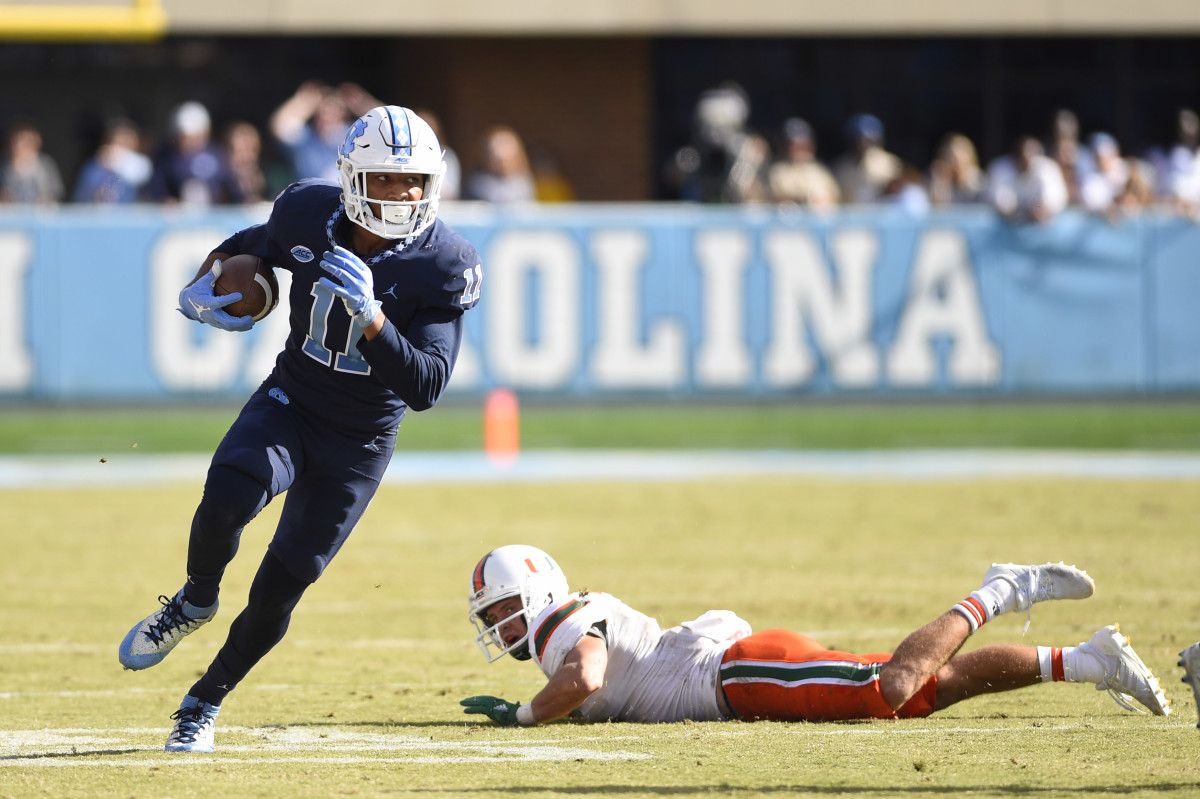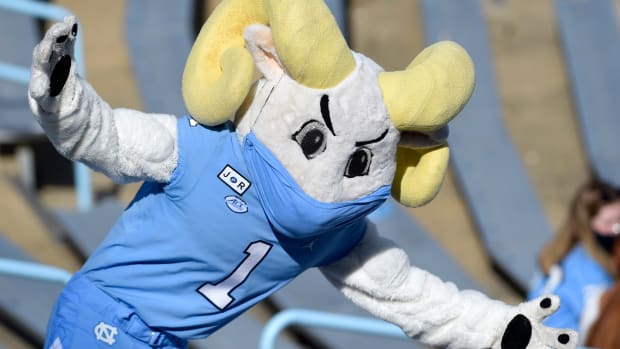Heels say they've never felt better after training camp. Here's how Brian Hess and coaches did it.

With training camp officially behind them, this group of Carolina football players has never felt better as the dog-days of August come to a close.
“Typically a lot of teams come in and they’re dead by gameday,” linebacker Allen Cater said. “I think a lot of our guys, we’re ready, we’re energized and everybody has their legs under them and they’re energized.”
Not just a lot.
Every player that spoke with reporters after Wednesday’s practice declared this training camp battered their bodies less than any other they’d experienced in Chapel Hill.
And it started in January, with the arrival strength and conditioning coach Brian Hess, new programs and a new approach to lifting, running and recovery.
Hess, who previously worked with offensive coordinator Phil Longo at Sam Houston State, spent the past four years alongside Jay Bateman at Army.
When Bateman was tabbed as Carolina’s new defensive coordinator, he couldn’t give a stronger recommendation.
“He’s a great motivator, he’s a great energy guy and I thought at West Point, those kids have a lot on their plate,” Bateman said.They don’t get to sleep much, nutrition is not great, there’s a lot of stress involved and he did such a great job of managing injuries.”
“I think he’ll do a tremendous job of the injury-prevention piece in the weight room. You can already tell, we’re more athletic and faster … Brian Hess is a Rockstar; we’re fortunate to have him.”
Injuries have ravaged the Carolina roster over the past two seasons, and among Mack Brown’s first moves as a coach, was to begin an investigation into the causes.
Some of it involved the overworked Kenan Stadium turf, some involved practicing outdoors every day and a lack of depth also contributed. Brown also said that he would keep some of the findings private.
What’s clear though is that injuries down, and on the whole, players are feeling more confident in their bodies with kickoff 10 days away.
“I think the strength staff and the coaches really took care of us this year,” right tackle Jordan Tucker said. “All the way from when they first got here in the winter, I think they just had the mindset of, ‘We’re going to take care of y’all, but we’re going to work.’ We do put in the work, day-in and day-out, but my body feels fresh.”
A one-size fits all strength program has been replaced by a position-based approach, which maximizes workouts for the specific needs of each group.
“Especially for some of the 300-plus pound guys, it killed some of them,” Tucker said. “Killed their legs before camp and all that and going into camp, it just didn’t help.”
The strength program also involves an element of competition, as the groups compete against one another in the weight-room. Not to mention, it helps break up the sometimes-monotonous task of grinding through those offseason workouts.
“I think it embraces the role of competition in the team that will take it from the weight room to the field to our opponents,” safety Myles Wolfolk said.
For running, gone are the marathon sessions that combined lifting and running in the same morning during the offseason. Now, the workouts are split throughout the day — emphasizing the recovery element of the new system.
Originally, training camp practices were scheduled earlier in the day, but the strength staff gave coaches feedback that players needed more rest. Not only did that get more rest, but practices generally moved into the indoor practice facility at the midway point — something Brown said he learned from his time at Texas when he felt like he worked several teams too hard in the August heat.
“Everything that we do has a reason when it comes to the stretching,” Cater said. “The things we’re taking as far as supplements, (visiting the) training room three or four times a day just to get our legs back under us. Everybody that has little bumps and bruises here and there, everybody is coming back feeling good the next day feeling good because of the things we’re doing afterward.”
That includes more work on mobility, ensuring that they’re stretching and working with foam rollers. Players said the program has invested in more Theragun and NormaTec devices for treatment and recovery, in addition to ensuring more opportunities for better nutrition.
Ultimately though, the common theme that kept coming up was more focused on the players themselves rather than any amount of treatment, lifting or time indoors — the personalized approach and care.
“I think the thing he’s adjusted (most) was just taking care of us,” Wofolk said. “Just making sure that we know what we have to do and teaching us little things, little tips that will helps us get our bodies together and get ready for the games.”
Follow HeelsMaven on Facebook, Instagram and Twitter for the latest updates






